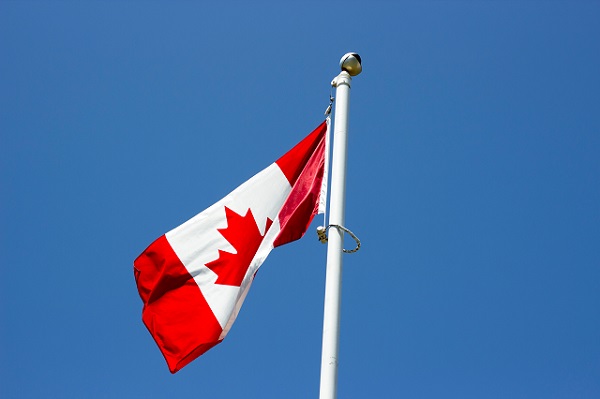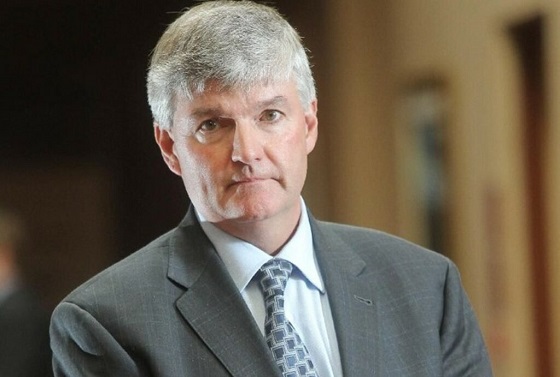Brownstone Institute
Listen to the Kids
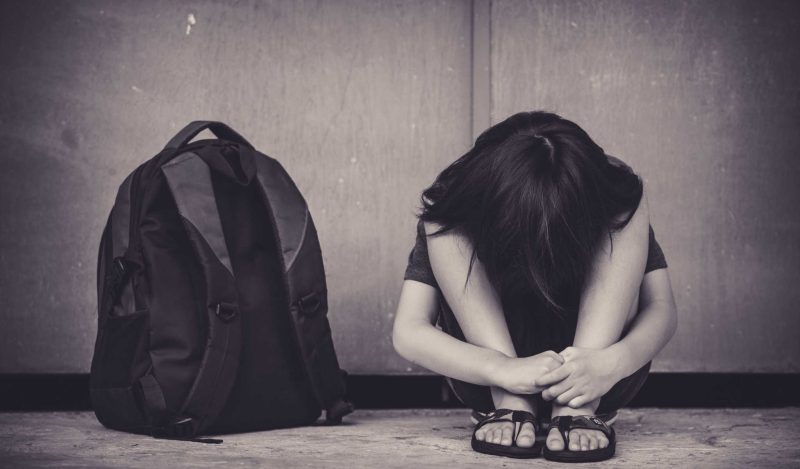
From the Brownstone Institute
BY
People often ask me why I still care about school closures and other covid restrictions that harmed a generation of children. “Schools are open now,” they say. “It’s enough already.”
No. It’s not. The impact to this generation of children continues. And so do many of the restrictions impacting young people.
It was just this week that New York City public schools lifted the ban on unvaccinated parents entering public school buildings.
This meant a parent who was unvaccinated could not attend a parent-teacher conference in person. Or watch their child play basketball. They could, however, attend a Knicks’ game at Madison Square Garden with 20,000 other basketball fans. This rule seemed designed specifically to punish children.
Colleges are some of the last places requiring vaccination — even boosters, in some instances, like at Fordham University. These young adults are least at risk from covid, most at risk from vaccine-induced myocarditis and are some of the last Americans required to be boosted. It makes no sense.
Rather than do my own rant about why I still care about the lasting harm done to children, I’d like to let the kids and parents speak for themselves.
The teens and parents cited below are all featured in a documentary film I’m making. I want their stories told. This all needs to be documented because the narrative is already shifting:
“Yeah schools shouldn’t have been closed so long but how could we have known! It’s over now. Time to move on.”
“Let’s declare an amnesty. We need to forgive the hard calls people needed to make without enough information. Good people did the best they could!”
“The open-schoolers may have been right but for the wrong reasons so they’re still terrible people. And besides it’s not a competition! No gloating! Let’s focus on the future!”
But it’s not over. The kids are not alright. And there is insufficient focus on how to reintegrate them and help them recover. This article, from the New York Times on January 27, lays bare the harms done, the possible lifetime effects, and the lack of attention and care being paid to helping kids recover:


I will continue to advocate for them, to tell their stories, to try to get them the help they still need and deserve. And to ensure this never happens again.
It’s time we listened to the children and parents impacted.
Garrett “Bam” Morgan, Jr., high school student. Astoria Queens, NY:
“I was so upset. Why is it that someone who pays for school and has more money to throw around . . .why do they get to play football? And I don’t. What is the difference? Because we’re playing the same sport. It’s not like they’re playing something totally drastically different. It’s the same sport. We’re doing the same things, and they get to practice, they get to play. And I don’t, and for me it was just like, why? Why me? Why my teammates? Why is it that we don’t get to have fun? Why is it that we don’t get to play the sport that we love too? How am I going to get into a college if I don’t have a junior year of football?
“I was gaining weight. And I was getting in a place where I had to start thinking of alternatives to football, thinking of life without football. Then I would try and go out and play with my friends, towards 2021 when it started to become, okay, you can somewhat go out, just stay socially distanced. But by that time, the damage was done, right?”
Scarlett Nolan, high school student. Oakland, CA:
“I didn’t make any new friends. No one did. I mean, how could you, you’re just talking to literal black boxes on a computer.”
“I don’t wanna blame it all on school closures, but it’s been a really, really big thing for me. That’s changed my life so much. That’s not how it’s supposed to go in school. You’re supposed to have school. It’s supposed to be your life. School is supposed to be your life from kindergarten to senior year. And then you go to college if you want, but that’s supposed to be your life. That’s your education. You have your friends there, you find yourself there. You find how you wanna be when you grow up there. And without that, I lost who I was completely. Everything who I was. I wasn’t that person that worked to get straight A’s anymore. I didn’t care. I was just sad.”
Ellie O’Malley, Scarlett’s mom. Oakland, CA:
“She had finished her eighth grade. She had missed everything. She’d missed her graduation. She’d missed this trip to Washington. And then she started her new school [high school] on-line. [She was] very disengaged, never saw people’s faces, no one had the camera on. I mean it was school in like the thinnest most loose [sense] of the word. For the most part it was pretty dire and terrible. By January 2021, she really just no longer had the motivation to do it. She wasn’t getting out of bed. She was really depressed at that point.”
“A lot of it was just mental health, suicidal tendencies, self-harm. The first time Scarlett went to hospital, she kind of had a bit of a nervous breakdown. I’d never experienced that. She was screaming and clawing at herself. And we were like, what do we do? What do we do?”
Miki Sedivy, a mom who lost her teenaged daughter Hannah to an accidental drug overdose in 2021. Lakewood, CO:
“You’re taking children out of their natural environment of playing with each other, interacting socially and learning coping skills by interacting with other children. And when you take all of that away and all of a sudden these kids are in isolation, they mentally don’t know how to handle it. We can go [through] short times of isolation, but we’re talking a year and a half. [That’s] of a lot of isolation.”
Jennifer Dale. Her 11-year-old daughter has Down syndrome. Lake Oswego, OR.
“The school closures were devastating for her. I don’t think I realized it at first. At first I thought it was safer. Lizzie, a child with Down syndrome, was probably more susceptible to a respiratory virus. She’s had more respiratory issues than her siblings. So at first I thought it was the right thing to do As time went on, I don’t think people realized how isolated she was. She doesn’t have a means of reaching out and saying Hey, how you doing? I miss you. I wanna see you.”
“What Lizzie really needs is to look at her peers and how are they zipping up their jacket, or how are they coming in in the morning and making a food selection for lunch. That peer interaction and that peer role modeling is some of the best learning that my daughter can experience. But that role modeling is gone. When you’re online she doesn’t get to see what the other kids are doing. She wasn’t out seeing people. Nobody knew that she was struggling. It was all in our house. It was impossible for a young person with cognitive delays to understand why, why was the world suddenly closed? Why suddenly could I not see my friends? Why am I only seeing them on a screen and how do I interact?”
Am’Brianna Daniels, high school student. San Francisco, CA.
“As time moved on, like later in the year, I started to realize I really wanted to be back in school. I was 24/7 [on Zoom] and I think that’s what took a toll on me. . . I actually stayed doing Zoom in my living room that way I wasn’t tempted to fall asleep or anything. This did not help. I still did fall asleep sometimes.”
“I had like very little motivation to actually get up, get on Zoom and attend class. And then I think coming up on the year anniversary of the initial lockdown and then the lack of social interaction is kind of what took a toll on my mental health since I am such a social person. And so it really got to a point where I was just not going to class.”
“And it got really bad to the point where I was either over-eating or just not eating very much, and I was kind of dehydrated during my depressive moods. And eventually I did get in contact with the therapist. It helped a little bit, but not to the extent that I would have hoped.
Nelson Ropati, high school student. San Francisco, CA.
“I just didn’t like staring at a screen for an hour for class. I just couldn’t do it. I would fall asleep or just lose focus easily.”
“It wasn’t really mandatory to go to class. So I ain’t gonna lie. I didn’t really go to class the rest of my junior year when covid hit and they kind of just passed everyone.”

Lorna Ropati, Nelson’s mom. San Francisco, CA.
“I felt bad for him because then that’s when he started doing nothing else, but just like eating. I said you’re not hungry. It’s just a habit. Don’t go to the fridge. He just mainly stayed home and did whatever he could through his on-line courses and just stayed home. I think he didn’t go out of the house at one point for six months. He didn’t go nowhere. He never even stepped out of the house. So that was not good. I said, you need to get out, you need to stop being in this little shell and bubble that you’re in. It’s okay. You can go out.”
Jim Kuczo, lost his son Kevin to suicide in 2021. Fairfield, CT.
“Well we were very concerned because of the grades — that was the tip off. But again, it was hard because you can’t go out with your friends. We were concerned. We asked the guidance counselor and the therapist, is he suicidal? They said no.”
“You cannot treat kids like prisoners and expect them to be okay. I think that we, our leaders, put most of the burden on children.”
“I went through lots of guilt — what did I do to cause my son to kill himself.”
Kristen Kuczo, Kevin’s mom. Fairfield, CT.
“He [Kevin] wound up not playing football and then we kind of just started noticing he just was doing less and less. His grades were starting to drop. Really the biggest red flag for me was the grades dropping.”
“The day after he took his life, I was supposed to be having a meeting with the guidance counselors and we were looking into getting him a 504, which would allow him extra time to do things and possibly on exams. We were pursuing that as a possibility to try to help support him in the school setting. Because he had spoken to us about having trouble focusing and feeling like he just couldn’t do it.”
“All these doctors, they weren’t taking anybody. They weren’t taking patients because they were full. They didn’t have any space to take on new clients. It was shocking. So I didn’t have an appointment with a psychiatrist until about a week and a half after Kevin passed.”

I’ll leave you with a few words from Garrett Morgan, Jr. He’s struggling to get his life back on track. To get his grades back up. To lose the 80 pounds he gained. To get back in shape. To play football again. To get that college scholarship.
He’s a fighter. And I have confidence he’ll succeed. But he won’t forget what he and his peers lost, what was taken from them, and how much tougher his road ahead is because of it.


“This is something that my generation will not forget. This is also something that my generation will not forgive. The memories that we have lost, the experiences that we have lost, the skills that we have lost because of covid. And now we have to regain that and go out into the world. It is going to be something that will define us.”
Reposted from the author’s Substack
Brownstone Institute
The Teams Are Set for World War III
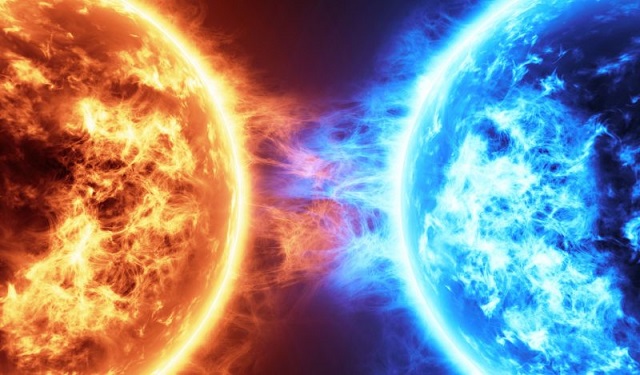
From the Brownstone Institute
BY
I’ve seen some crazy things over the last few years but this is off-the-charts insane.
Last week, Michael E. Mann spoke at the EcoHeath Alliance: Green Planet One Health Benefit 2024. Just to recap who each of these players are:
- Michael E. Mann is the creator of the “hockey stick graph” that has driven the global warming debate for the last 25 years.
- EcoHealth Alliance is the CIA cutout led by Peter Daszak that launders money from the NIH to the Wuhan Institute of Virology to create gain-of-function viruses (including SARS-CoV-2 which killed over 7 million people).
- “One Health” is the pretext the World Health Organization (WHO) is using to drive the Pandemic Treaty that will vastly expand the powers of the WHO and create economic incentives for every nation on earth to develop new gain-of-function viruses.
So a leader in the global warming movement spoke at an event to raise money for the organization that just murdered 7 million people and the campaign that intends to launch new pandemics in perpetuity to enrich the biowarfare industrial complex.

And then just for good measure, Peter Hotez reposted all of this information on Twitter, I imagine in solidarity with all of the exciting genociding going on.

Mann’s appearance at this event is emblematic of a disturbing shift that has been years in the making. Serious and thoughtful people in the environmental movement tried to address industrial and military pollution for decades. Now their cause has been co-opted by Big Tech and other corporate actors with malevolent intentions — and the rest of the environmental movement has gone along with this, apparently without objection. So we are witnessing a convergence between the global warming movement, the biowarfare industrial complex, and the WHO pandemic treaty grifters.
I wish it wasn’t true but here we are.
Before I go any further I need to make one thing clear: the notion that pandemics are driven by global warming is complete and total bullsh*t. The evidence is overwhelming that pandemics are created by the biowarfare industrial complex including the 13,000 psychopaths who work at over 400 US bioweapons labs (as described in great detail in The Wuhan Cover-Up).
Unfortunately “global warming” has become a cover for the proliferation of the biowarfare industrial economy.
Mann’s appearance at an event to raise money for people who are clearly guilty of genocide (and planning more carnage) made me realize that this really is World War III. They are straight-up telling us who they are and what they intend to do.
The different sides in this war are not nation-states. Instead, Team Tyranny is a bunch of different business interests pushing what has become a giant multi-trillion dollar grift. And Team Freedom is ordinary people throughout the world just trying to return to the classical economic and political liberalism that drove human progress from 1776 until 2020.
Here’s how I see the battle lines being drawn:
TEAM TYRANNY
Their base: Elites, billionaires, the ruling class, the biowarfare industrial complex, intelligence agencies, and bougie technocrats.
Institutions they control: WEF, WHO, UN, BMGF, World Bank, IMF, most universities, the mainstream media, and liberal governments throughout the developed world.
Economic philosophy: The billionaires should control all wealth on earth. The peasants should only be allowed to exist to serve the billionaires, grow food, and fix the machines when necessary. Robots and Artificial Intelligence will soon be able to replace most of the peasants.
Political philosophy: Centralized control of everything. Elites know best. The 90% should shut up, pay their taxes, take their vaccines, develop chronic disease, and die. High tech global totalitarianism is the best form of government. Billionaires are God.
Philosophy of medicine: Allopathic. Cut, poison, burn, kill. Corporations create all knowledge. Bodies are machines. Transhumanism is ideal. The billionaires will soon live forever in the digital cloud.
Their currency: For now, inflationary Federal Reserve policies. Soon, Central Bank Digital Currency (CBDC) that will put the peasants in their place once and for all.
Policy vehicles to advance their agenda: One Health; WHO Pandemic Treaty; social credit scores; climate scores; vaccine mandates/passports; lockdowns and quarantine camps; elimination of small farms and livestock; corporate control of all food, land, water, transportation, and the weather; corporate control of social movements; and 15-minute cities for the peasants.
Military strategy: Gain-of-function viruses, propaganda, and vaccines.
TEAM FREEDOM
Our base: The medical freedom movement, Constitutionalists, small “l” libertarians, independent farmers, natural meat and milk producers, pirate parties, natural healers, homeopaths, chiropractors, integrative and functional medicine doctors, and osteopaths.
Aligned institutions: CHD, ICAN, Brownstone Institute, NVIC, SFHF, the RFK, Jr. campaign, the Republican party at the county level…
Economic philosophy: Small “c” capitalism. Competition. Entrepreneurship.
Political philosophy: Classical liberalism. The people, using their own ingenuity, will generally figure out the best way to do things. Decentralize everything including the internet. If the elites would just leave us alone the world would be a much more peaceful, creative, and prosperous place. Human freedom leads to human flourishing.
Philosophy of medicine: Nature is infinite in its wisdom. Listen to the body. Systems have the ability to heal and regenerate.
Our currency: Cash, gold, crypto, and barter. (I don’t love crypto but lots of smart people in our movement do.)
Policy ideas: Exit the WHO. Boycott WEF companies. Repeal the Bayh-Dole Act, NCVIA Act, Patriot Act, and PREP Act. Add medical freedom to the Constitution. Prosecute the Faucistas at Nuremberg 2.0. Overhaul the NIH, FDA, CDC, EPA, USDA, FCC, DoD, and intelligence agencies. Make all publicly-funded scientific data available to the public. Ban insider trading by Congress. Support and protect organic food, farms, and farmers’ markets. Break up monopolies. Cut the size of the federal government in half (or more).
Our preferred tools to create change: Ideas, love for humanity, logic and reason, common sense, art and music, and popular uprising.
What would you add, subtract, or change in each of these lists?
Republished from the author’s Substack
Brownstone Institute
A Coup Without Firing a Shot

From the Brownstone Institute
BY
We all have a different starting place and journey but each of us has the following in common. We’ve realized that official sources, the ones we’ve trusted in the past, are not going to make any sense of the above for us. We have to seek out alternatives and put the story together ourselves. And this we must do because the only other choice is to accept that all of the above consists of a random series of disconnected and pointless events, which is surely not true.
The last few years can be tracked at two levels: the physical reality around us and the realm of the intellectual, mental, and psychological.
The first level has presented a chaotic narrative of the previously unthinkable. A killer virus that turned out to be what many people said it was in February 2020: a bad flu with a known demographic risk best treated with known therapeutics. But that template and the ensuing campaign of fear and emergency rule gave rise to astonishing changes in our lives.
Social functioning was wholly upended as schools, businesses, churches, and travel were ended by force. The entire population of the world was told to mask up, despite vast evidence that doing so achieved nothing in terms of stopping a respiratory virus.
That was followed by a breathtaking propaganda campaign for a shot that failed to live up to its promise. The cure for the disease itself caused tremendous damage to health including death, a subject about which everyone cared intensely before the shot and then strangely forgot about after.
Protests against the goings-on were met with media smears, shutdowns, and even the cancellation of bank accounts. However, and simultaneously, other forms of protest were encouraged, insofar as they were motivated by a more proper political agenda against structural injustices in the old system of law and order. That was a strange confluence of events, to say the least.
In the midst of this, which was wild enough, came new forms of surveillance, censorship, corporate consolidation, an explosion of government spending and power, rampant and global inflation, and hot wars from long-running border conflicts in two crucial regions.
The old Declarations of rules on the Internet put free speech as a first principle. Today, the hosting website of the most famous one, signed by Amnesty International and the ACLU, is gone, almost as if it never existed. In 2022, it came to be replaced by a White House Declaration on the Future of the Internet, that extols stakeholder control as the central principle.
All the while, once-trusted sources of information – media, academia, think tanks – have steadfastly refused to report and respond in truthful ways, leading to a further loss of public trust not just in government and politics but also in everything else, including corporate tech and all the higher order sectors of the culture.
Also part of this has been a political crisis in many nations, including the use of sketchy election strategies justified by epidemiologic emergency: the only safe way to vote (said the CDC) is absentee via the mails. Here we find one of many overlapping parallels to a scenario hardly ever imagined: infectious disease deployed as a cover for political manipulation.
Crucially and ominously, all of these mind-blowing developments took place in roughly similar ways the world over, and with the same language and model. Everywhere people were told “We are all in this together,” and that social distancing, masking, and vaxxing was the correct way out. Media was also censored everywhere, while anti-lockdown protestors (or even those who simply wanted to worship together in peace) were treated not as dissidents to be tolerated but irresponsible spreaders of disease.
Can we really pretend that all of this is normal, much less justified? The exhortation we receive daily is that we can and must.
Really? At what point did you realize that you had to start thinking for yourself?
We all have a different starting place and journey but each of us has the following in common. We’ve realized that official sources, the ones we’ve trusted in the past, are not going to make any sense of the above for us. We have to seek out alternatives and put the story together ourselves. And this we must do because the only other choice is to accept that all of the above consists of a random series of disconnected and pointless events, which is surely not true.
That leads to the second layer of comprehension; the intellectual, mental, and psychological. Here is where we find the real drama and incalculable difficulties.
At the dawn of lockdowns, what appeared to be a primitive public health error seemed to be taking place. It seemed like some scientists at the top, who gained an implausible amount of influence over government policy, had forgotten about natural immunity and were under the impression that it was good for health to stay home, be personally isolated, avoid exercise, and eat only takeout food. Surely such preposterous advice would be revealed soon as the nonsense it was.
How in the world could they be so stupid? How did they gain so much influence, not just nationally but all over the world? Did the whole of humanity suddenly forget about all known science in every field from virology to economics to psychology?
As time went on, more and more anomalies appeared that made that judgment seem naïve. As it turns out, what was actually taking place had something to do with a move on the part of security and intelligence services. It was they who were given rule-making authority on March 13, 2020, and that’s why so much of what we needed to know was and is considered classified.
There were early initial reports that the virus itself might have been leaked from a US-backed lab in Wuhan, which introduces the entire subject of the US bioweapons program. This is a very deep rabbit hole itself, thoroughly exposed in Robert F. Kennedy, Jr.’s The Wuhan Cover-Up. There was a reason that topic was censored: it was all true. And as it turns out, the vaccine itself was able to bypass the normal approval process by slipping through under the cover of emergency. In effect, it came pre-approved by the military.
As the evidence continues to roll in, more and more rabbit holes appear, thousands of them. Each has a name: Pharma, CCP, WHO, Big Tech, Big Media, CBDCs, WEF, Deep State, Great Reset, Censorship, FTX, CISA, EVs, Climate Change, DEI, BlackRock, and many more besides. Each of these subject areas has threads or thousands of them, each connecting to more and to each other. At this point, it is simply not possible for a single person to follow it all.
To those of us who have been steeped in following the revelations day by day, and trying to keep up with putting them together into a coherent model of what happened to us, and what is still going on, the ominous reality is that the traditional understanding of rights, liberties, law, business, media, and science were dramatically overthrown in the course of just a few months and years.
Nothing operates today as it did in 2019. It’s not just that functioning broke. It was broken and then replaced. And the surreptitious coup d’état with no shots fired is still ongoing, even if that is not the headline.
Of this fact, many of us today are certain. But how common is this knowledge? Is it a vague intuition held by many members of the public or is it known in more detail? There are no reliable polls. We are left to guess. If any of us in 2019 believed we had our finger on the pulse of the national mood or public opinion generally, we certainly do not anymore.
Nor do we have access to the inner workings of government at the highest levels, much less the conversations going on among the winners of our age, the well-connected ruling elites who seemed to have gamed the entire system for their own benefit.
It’s so much easier to regard the whole thing as a giant confusion or accident on grounds that only cranks and crazies believe in conspiracy theories. The trouble with that outlook is that it posits something even more implausible; that something this gigantic, far-reaching, and dramatic could have happened with no real intentionality or purpose or that it all fell together as a huge accident.
Brownstone Institute has published more than 2,000 articles and 10 books exploring all over the above topics. Other venues and friends are out there helping us with this research and discovery, issue by issue. Even so, a great deal of responsibility falls on this one institution, the main work of which is providing support for dissident and displaced voices, which is implausible since it was only founded three years ago. We are deeply grateful for our supporters and would welcome you to join them.
As for the intellectuals we once revered for their curiosity and wisdom, most seem to have gone into hiding, either unable to adapt to the new realities or just unwilling to risk their careers by exploring hard topics. It’s understandable but still tragic. Most are happy to pretend like nothing happened or celebrate the change as nothing but progress. As for journalists, the New York Times publishes daily commentaries dismissing the Constitution as a dated anachronism that has to go and no one thinks much about it.
There is a lot to sort out. So much has changed so quickly. No sooner than the dust seems to be settling from one upheaval, there is another and then another. Keeping up with it all causes a level of psychological brain scramble on a scale we’ve never previously experienced.
It’s easier to wait for the historians to tell the next generation what happened. But maybe, just maybe, by stepping up and telling the story as we see it in real time, we can make a difference in stopping this madness and restoring some sane and normal freedom back to the world.
-

 Business2 days ago
Business2 days agoDon’t be fooled by high-speed rail
-

 Alberta2 days ago
Alberta2 days agoActivity-Based Hospital Funding in Alberta: Insights from Quebec and Australia
-

 Business1 day ago
Business1 day agoUN plastics plans are unscientific and unrealistic
-

 Business1 day ago
Business1 day agoTaxpayers criticize Trudeau and Ford for Honda deal
-
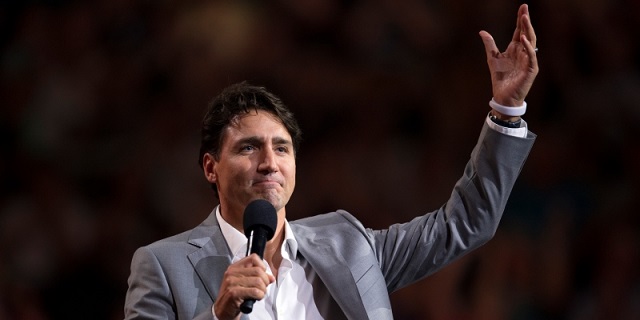
 Fraser Institute2 days ago
Fraser Institute2 days agoCanadians should decide what to do with their money—not politicians and bureaucrats
-
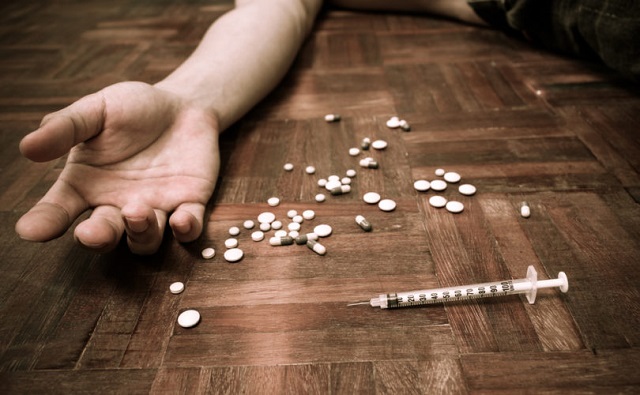
 Addictions1 day ago
Addictions1 day agoBritish Columbia should allow addicts to possess even more drugs, federal report suggests
-
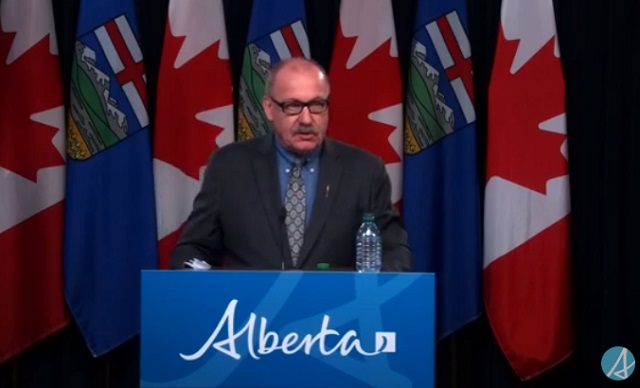
 Alberta1 day ago
Alberta1 day agoPolitical parties will be part of municipal elections in Edmonton and Calgary pilot projects
-
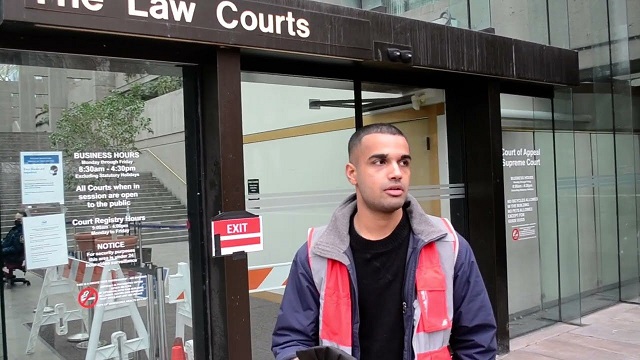
 Bruce Dowbiggin1 day ago
Bruce Dowbiggin1 day agoCome For The Graduate Studies, Stay For The Revolution



